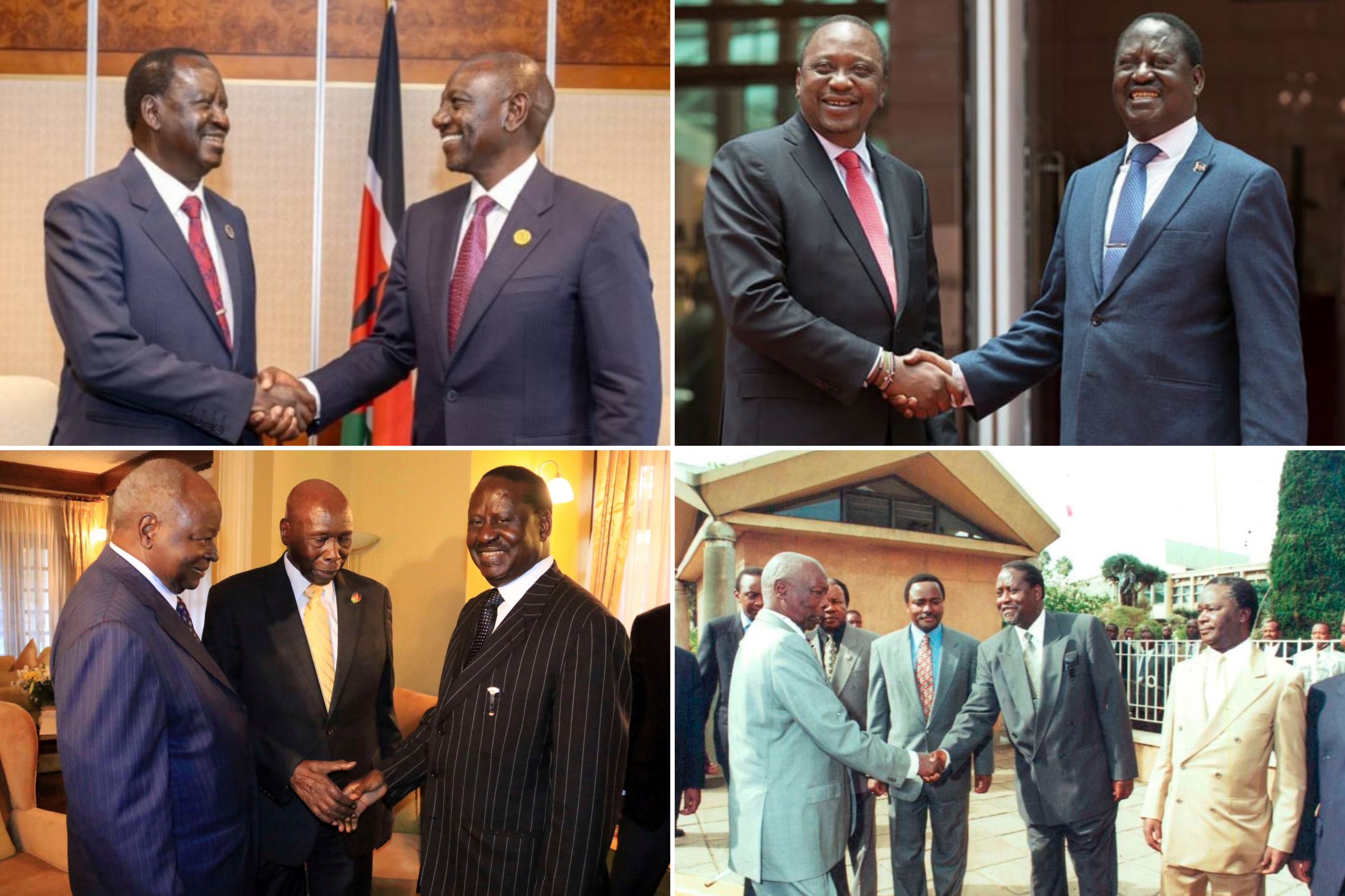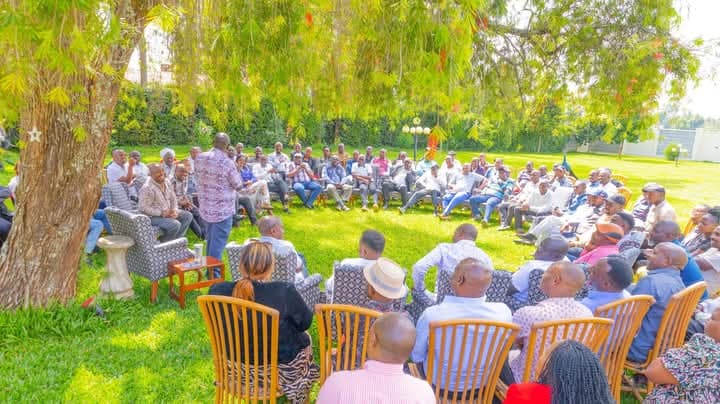The Orange Democratic Movement (ODM) party leader Raila Odinga signed Pact to work together under the broad-based government arrangement with the Kenya-Kwanza administration has solidified Odinga's role as the master of handshakes.
From former president Daniel Moi to now William Ruto, Odinga’s political acumen of getting into governments of his political competitors in the name of national unity, cooperation or for development’s sake has compounded allies and foes.
Ruto’s “handshake” with Odinga comes after the March 2018 pact between the ODM leader and former President Uhuru Kenyatta which ushered in political calmness following the acrimonious 2017 General Election.
It was one of three previous ‘handshakes’ for Odinga since the one brokered by the late former UN Secretary-General Kofi Annan in 2008 and 20 years since another with former president Daniel Arap Moi in 1998.
Odinga’s first political truce or pact was in 1998 with Moi after the 1997 General Election. Kibaki, who came second, protested the outcome of the poll and took a petition to the Court of Appeal, which he lost on a technicality for not personally serving Moi.
Odinga, who came third, surprised friends and foes when he met Moi at his Kabarak home a day after the election and agreed to co-operation between Kanu and NDP. He was also not to contest Kanu’s win besides halting all planned demos.
As a result of the cooperation, Odinga was appointed to the lucrative Ministry of Energy as minister and his close allies got government jobs.
The Kanu-NDP deal that Odinga brokered later matured into a merger in 2002 and its strengthened bromance consummated at the Moi International Sports Centre, Kasarani during the Kanu national party elections where Odinga was elected secretary-general as then vice president, the late Prof George Saitoti, the late Joseph Kamotho were unceremoniously expended.
It is at Kasarani that Moi and Odinga shook hands, the first of the many ‘handshakes’ for the former Prime Minister.
However, Moi had other ideas.
Despite Odinga sacrificing his liberation credentials, he ended up the loser as his hope of succeeding Moi ended up in smoke after Moi chose Uhuru Kenyatta as his preferred successor.
The Kanu cooperation failed him and he later led a bitter walkout from Kanu alongside most of Moi’s former allies who turned into disgruntled elements, including Saitoti and Kamotho, to form the Liberal Democratic Party (LDP) ahead of the next elections in which he sought a joint opposition candidate to take on Kenyatta.
Odinga had initially agreed with former powerful cabinet minister Simeon Nyachae to back his Ford People candidature, but backpedalled and declared ‘Kibaki Tosha’ at a rally in Uhuru Park paving the way for a Kibaki presidency.
After the 2007 bitterly contested election that plunged the country into ethnic strife, taking international mediators for the two sides to reach a truce, there was a ‘handshake’ between Kibaki and Odinga at Harambee House, brokered by Koffi Annan.
Come the 2017 contest, Odinga boycotted a fresh election ordered by the Supreme Court after his successful challenge to Kenyatta’s win and the country yet again faced the prospect of plunging into widespread chaos before he had a handshake with Kenyatta.







